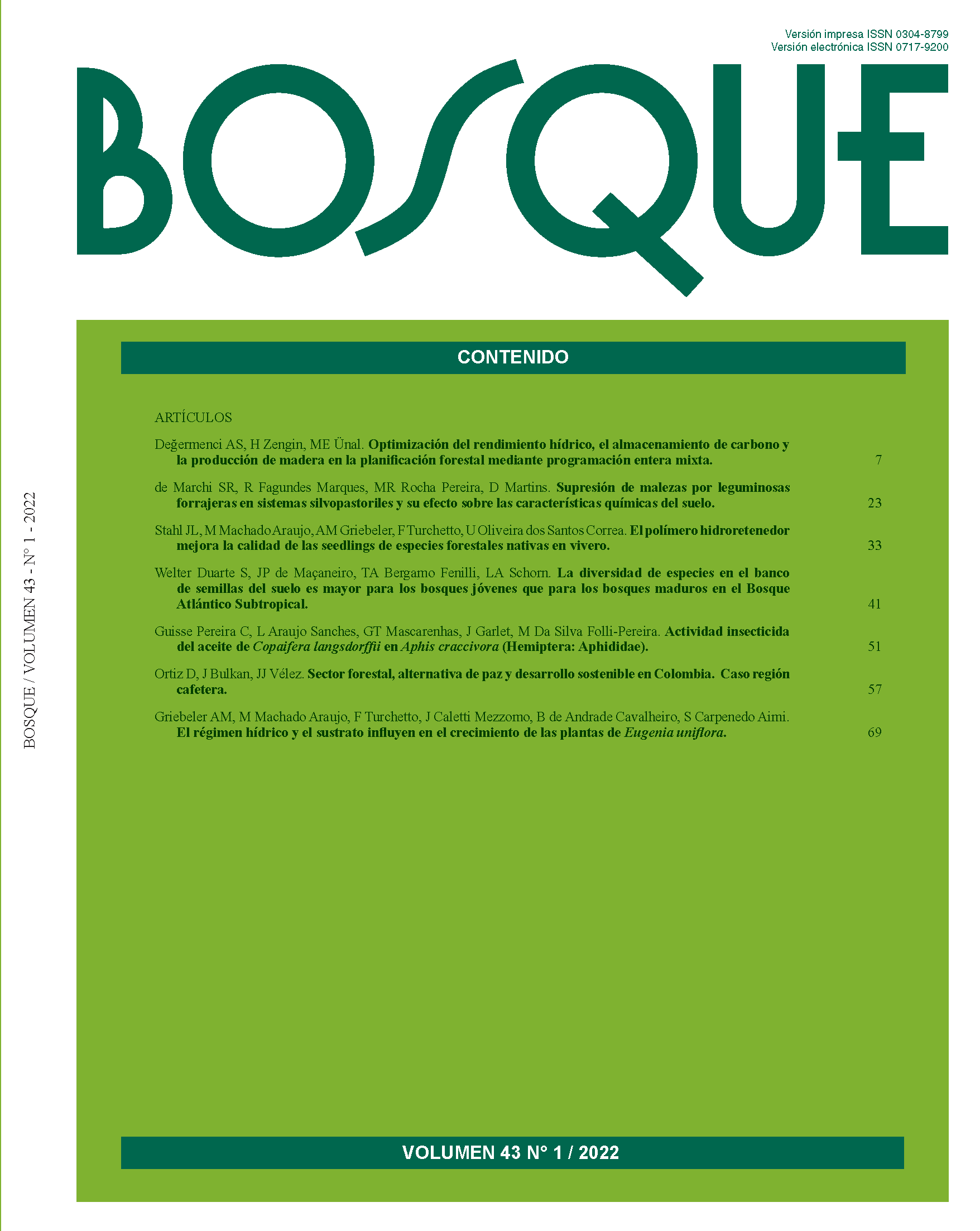Species diversity in the soil seed bank is higher for young forests than for mature forests in the Subtropical Atlantic Forest
Conteúdo do artigo principal
Resumo
Species diversity can contribute to the resilience of the ecosystem and can be assessed through the soil seed bank (SSB). SSB is an indicator of forest development after the occurrence of disturbances. Thus, this study aimed at evaluating the relation of the soil fertility with the soil seed bank and the variation of seed bank species diversity at distinct successional stages after abandonment of pasture (25, 35, 45 and > 50 years). Ten samples of soil were collected per site, being distributed in trays and arranged in a greenhouse for a germination analysis. Results indicate that species diversity in SSB is higher in young forests than in mature forests. In addition, soil characteristics are different among successional stages, in which the young forests are associated with higher availability of nutrients. Finally, forests in early stages have higher potential for recovery of degraded areas in relation to the forest seed bank in advanced stages.

